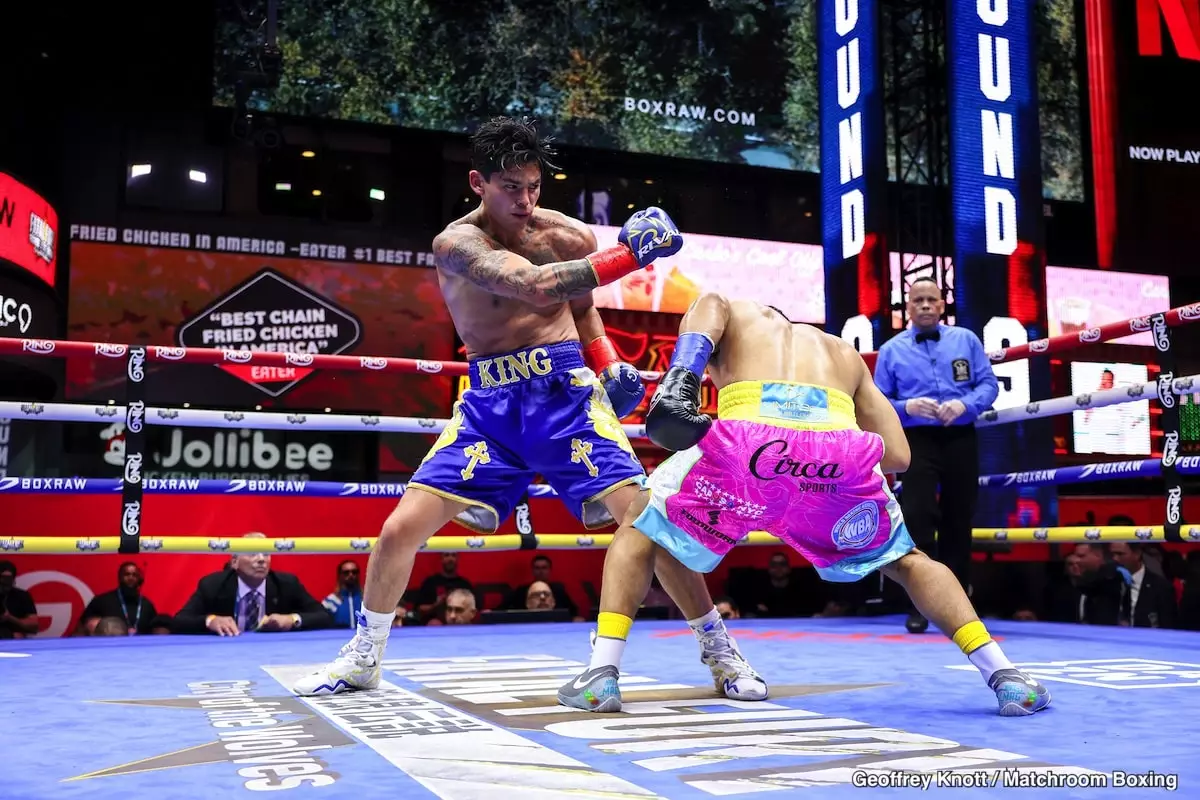Last Friday night in New York City, a stark reality check resonated through the boxing world as Ryan Garcia faced Rolando ‘Rolly’ Romero for the WBA ‘regular’ welterweight title. With an underwhelming performance marked by fear and hesitation, Garcia raised questions not just about his boxing abilities but about his very identity as a contender in a sport that demands unwavering conviction and raw tenacity. Following the match, Lionel “Lonnie B” Thompson opined that Garcia should consider a pivot to a more mainstream career, perhaps as a “YouTube sensation,” underscoring the growing sentiment that the talented but timid fighter is less a warrior and more a spectacle to be viewed online.
Garcia’s record stood at a deceptive 24 wins, with 20 of those by knockout. However, the statistics reveal a stark contrast to the persona he cultivated online. The fight stats illustrated the disparity: Garcia landed only 31.4% of his punches, a stark reminder that being favored on social media does not translate to success in the ring. Thompson noted that Garcia appeared to spend the entire fight “walking on eggshells,” thanks to a second-round knockdown that sent shockwaves through his confidence. This was not the display of a welterweight contender, but rather the actions of a fighter overwhelmed by the pressures of expectation and the harsh reality of being outclassed by his opponent.
Fear as a Tactical Deficiency
After being dropped in the second round by Romero’s jarring left hook, Garcia entered a defensive shell that he failed to break free from. His retreat became a narrative of the fight, effectively immobilizing any offensive strategies his corner might have urged him to employ. Lonnie B’s critique of Garcia’s approach sounded a clarion call: “You can’t be afraid to engage!” The hesitance to risk taking a hit for a chance to land a blow highlighted a more significant issue—boxing is not merely about technique but an unyielding willingness to withstand adversity.
In fact, Garcia’s primary weapon, his left hook, morphed into a distant dream rather than a tactical reality. Stripped of his willingness to approach Romero, Garcia’s power became neutered, impeding his capability to reclaim the initiative. He remained distant, disengaged, effectively giving Romero a free pass to dictate the pace and the outcome of the fight. Thompson’s analysis of Garcia’s reliance on his lackluster right hand—deemed “like a vestigial feature, like the arms of an extinct T-Rex”—is symbolic of the multifaceted limitations that plagued Garcia on that fateful night.
The Myth of Manufactured Champions
The conversation surrounding Garcia’s performance goes beyond mere disappointment; it dives deep into a deeper malaise affecting modern boxing. Many fighters, including other well-known names like Devin Haney and Teofimo Lopez, have become part and parcel of a manufactured boxing culture—a reality where promoters carefully craft narratives and scripts that mask the true capabilities of their fighters. Thompson’s assessment that Garcia and his contemporaries are “spoiled millionaires” rings alarmingly true. This fabricated narrative leads observers to question whether these athletes are being promoted based on merit or mere marketability.
It begs the question: are we witnessing the rise of “manufactured fighters”? This cadre of athletes lacks the raw resolve exhibited by traditional champions who carve out their legacies in the ring. Instead, they sidestep high-stakes confrontations for the sake of preserving their public image—or, in Garcia’s case, a potential shot at another big payday against Haney. The boxing landscape should primarily reward those who endure the rigors of competition, solidifying their legacies through both grit and skill.
Reimagining Boxing’s Competitive Landscape
As Thompson astutely points out, boxing has gone through a transformation that may favor the marketable over the formidable. He argues that more exciting bouts can emerge from fighters who are genuinely passionate about the sport and less concerned with their social media presence. Such a viewpoint shifts the focus back to authenticity, provocation, and courage—qualities that real warriors bring to the ring. It becomes ever more crucial to critically analyze and push back against the illusion that commercially viable personalities represent the apex of boxing skill.
Amid these narratives, boxing fans and enthusiasts must insist on transparency and genuine competition in an era characterized by a veneer of glitz and glamour. With fans bearing witness to yet another sobering performance from Ryan Garcia, there lies an unspoken challenge for him and his peers—start engaging in the kind of fights that resonate beyond the fabrications of social media and produce memorable moments for all the right reasons. The sport deserves fire and tenacity, not just a curated online persona.

